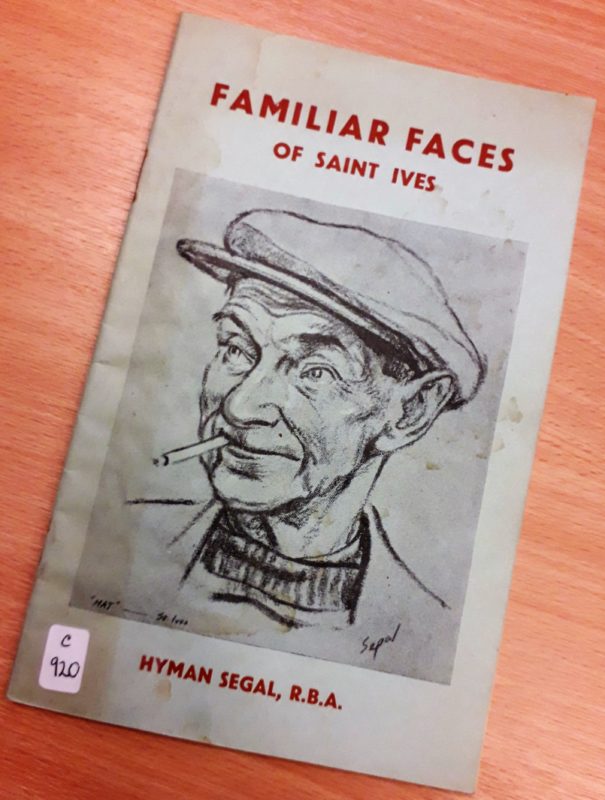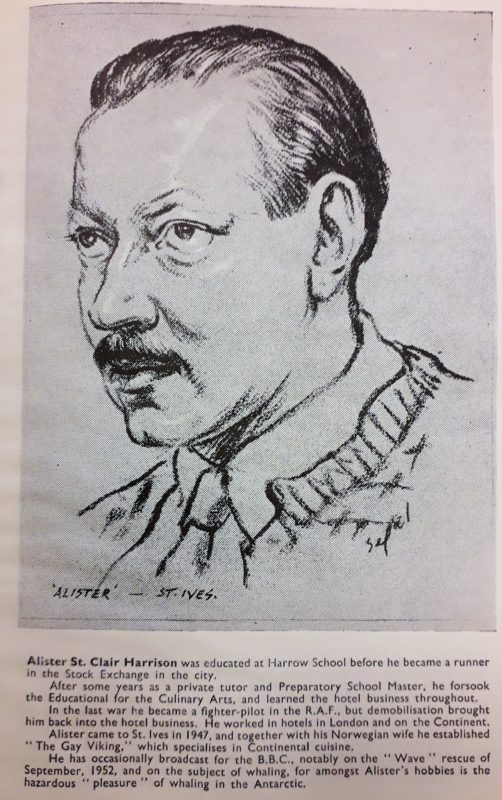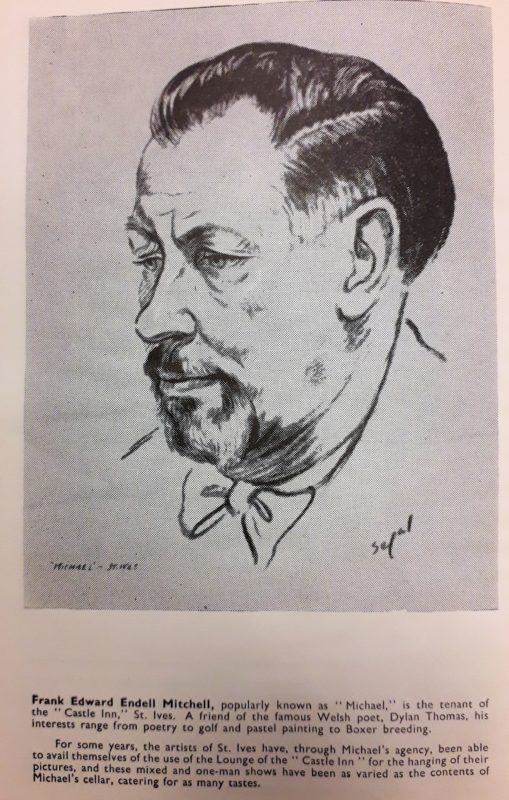
The library has recently received a charming donation. Titled Familiar Faces of St Ives, this uniquely illustrated pamphlet of around 20 pages offers a brilliant summary of life in St Ives just after the War – the town’s ‘Silver Age’ it might be termed. This fascinating time period is manifest in the vivid sketches by the well-known St Ives artist, Hyman Segal. https://cornwallartists.org/
Segal is probably best remembered for his African paintings as well as for his skill in portraying cats with sweeping economical lines. A Daily Mirror photographic frontispiece shows him, an Art Therapist at West Cornwall Hospital, helping the recovery of a young lad at Tehidy Sanatorium in Camborne. This classic photograph by Bela Zola indicates the pride in the newly created NHS (Zola was a leading photographer who recorded later the Aberfan Disaster and the Profumo Affair among other renowned assignments.) https://www.worldpressphoto.
The first sketch in the pamphlet is of our celebrated Town Crier, Abraham Curnow – here just 54 years old. This is accompanied by a sketch of his Father-in-Law, Ernest James Stevens, popularly known as “Jimmy Limpets”. This drawing with others by Segal now hangs in the Sloop Inn.
On the following page is an image of Thomas Tonkin Prynne who had been the manager of Lanham’s picture framing business which in previous years supplied the Royal Academy and other galleries with canvases by inter alia , Julius Olsen, Louis Grier and Moffat Linder. In addition to running an efficient business, he worked for 16 years as a member of the volunteer fire brigade, had a blue Persian cat and loved fishing.
There is also a magnificent sketch of Alistair St Clair Harrison, like Churchill, an old Harovian who had been a fighter pilot during the Second World War. It was Harrison who broadcast for the BBC about the rescue of HMS Wave in September 1952 and also about his interest in Antarctic whaling. It was with his Norwegian wife that he established “The Gay Viking”; almost as famous for its colourful clientele as its innovative continental cuisine. (Gay Viking was incidentally one of eight vessels that were ordered by the Turkish Navy, but were requisitioned by the Royal Navy to serve with Coastal Forces during the Second World War).

Frank Edward Endell Mitchell, appropriately portrayed with bow-tie, fashionable in the 1950’s, was known as “Micheal” and was the tenant of the Castle Inn. His friendship with Dylan Thomas must have been firmly established in the bohemian atmosphere of the bar there, then opposite Lanham’s and the Scala Cinema (presently Boots). Mitchell, who was the brother I believe, of the eminent sculptor, Denis Mitchell, offered the Castle lounge for the display of art works and in his spare time, he himself did pastels and was occupied in breeding Boxer dogs.

The donation of this little pamphlet to the Morrab Archive offers members the opportunity to recreate for themselves the ambience of the Fifties through “The Familiar Faces of St Ives”.
George Care, Library Member and Trustee
